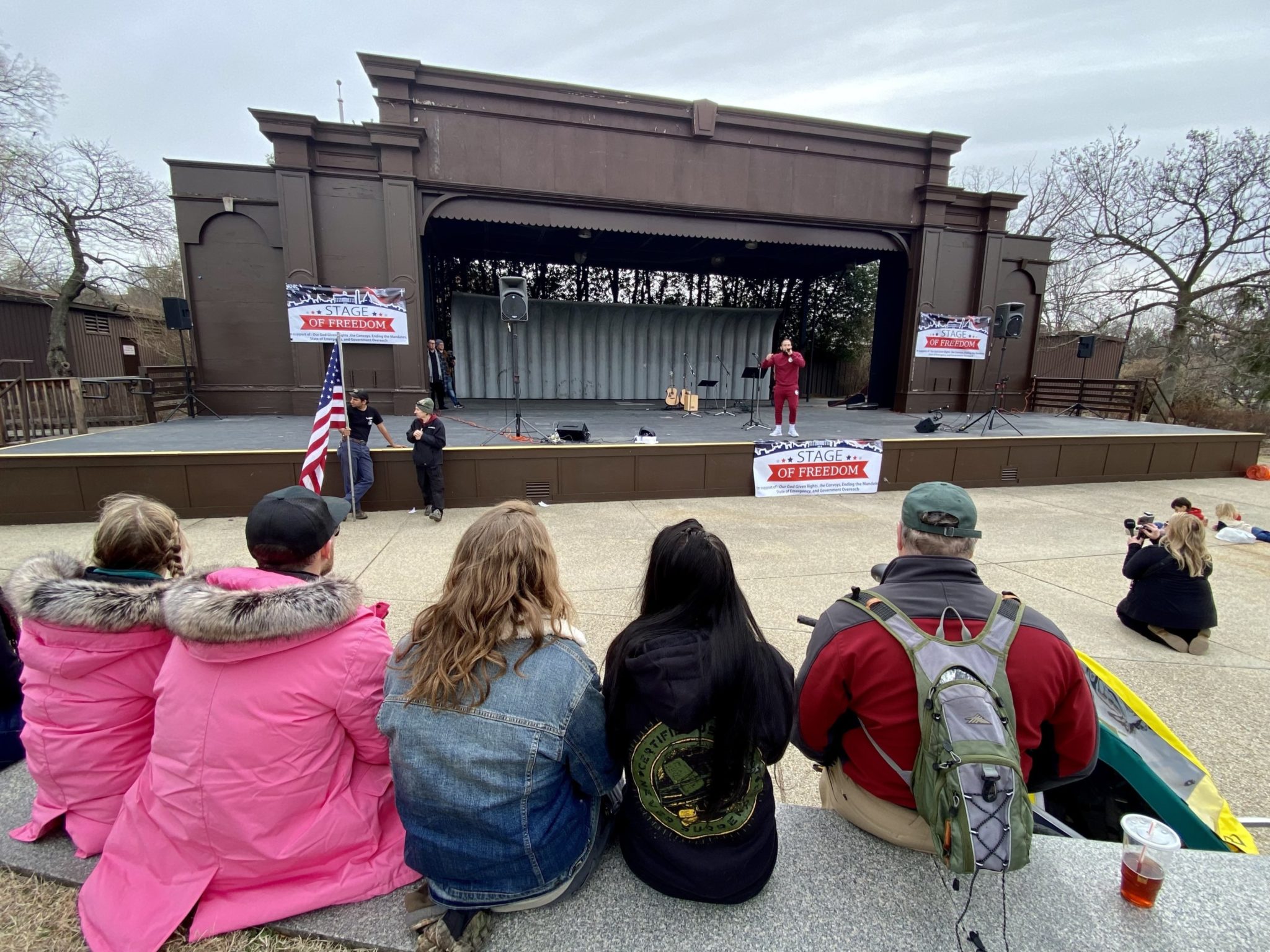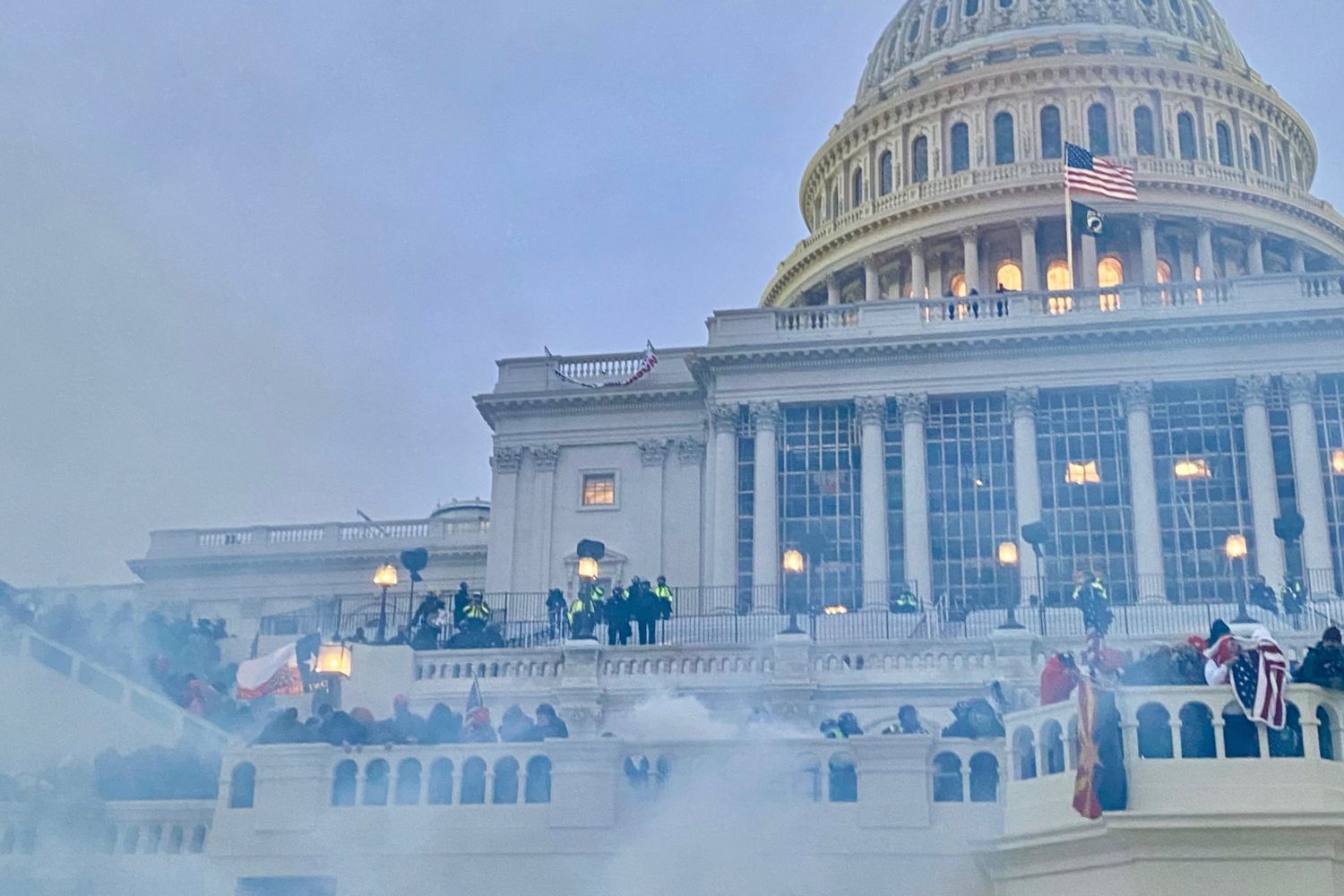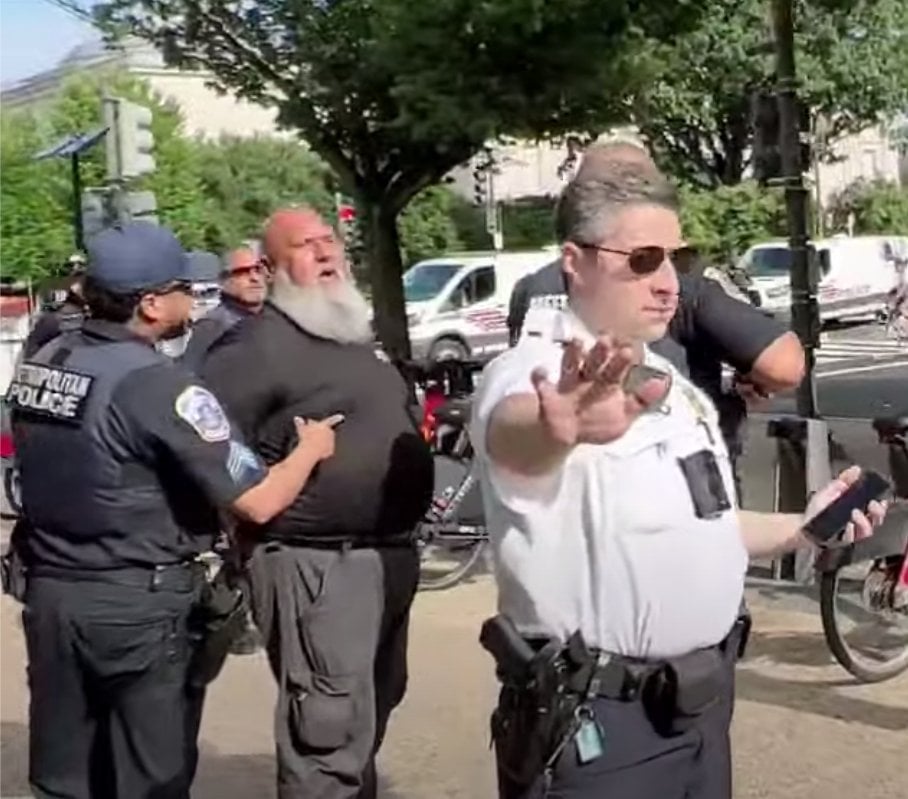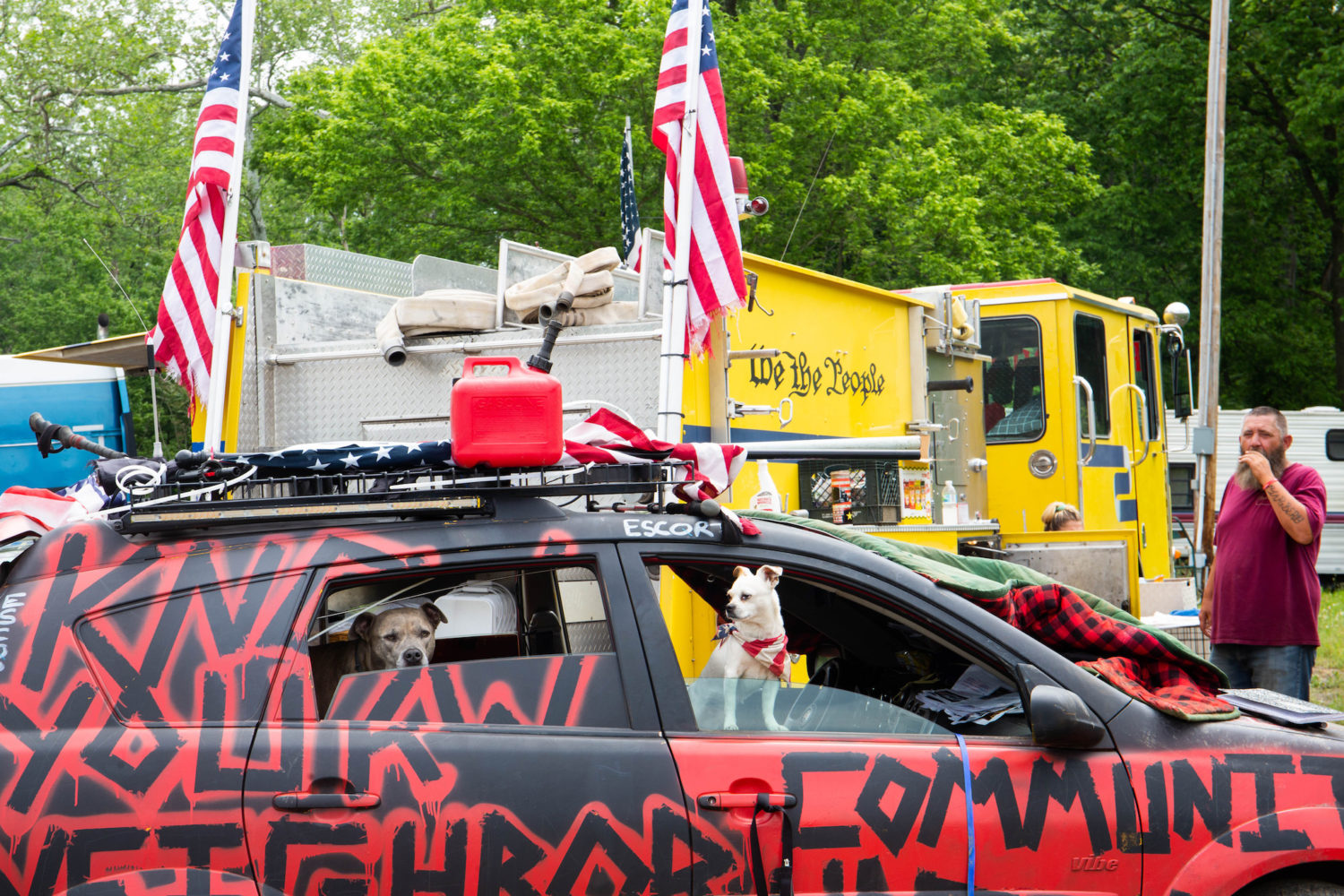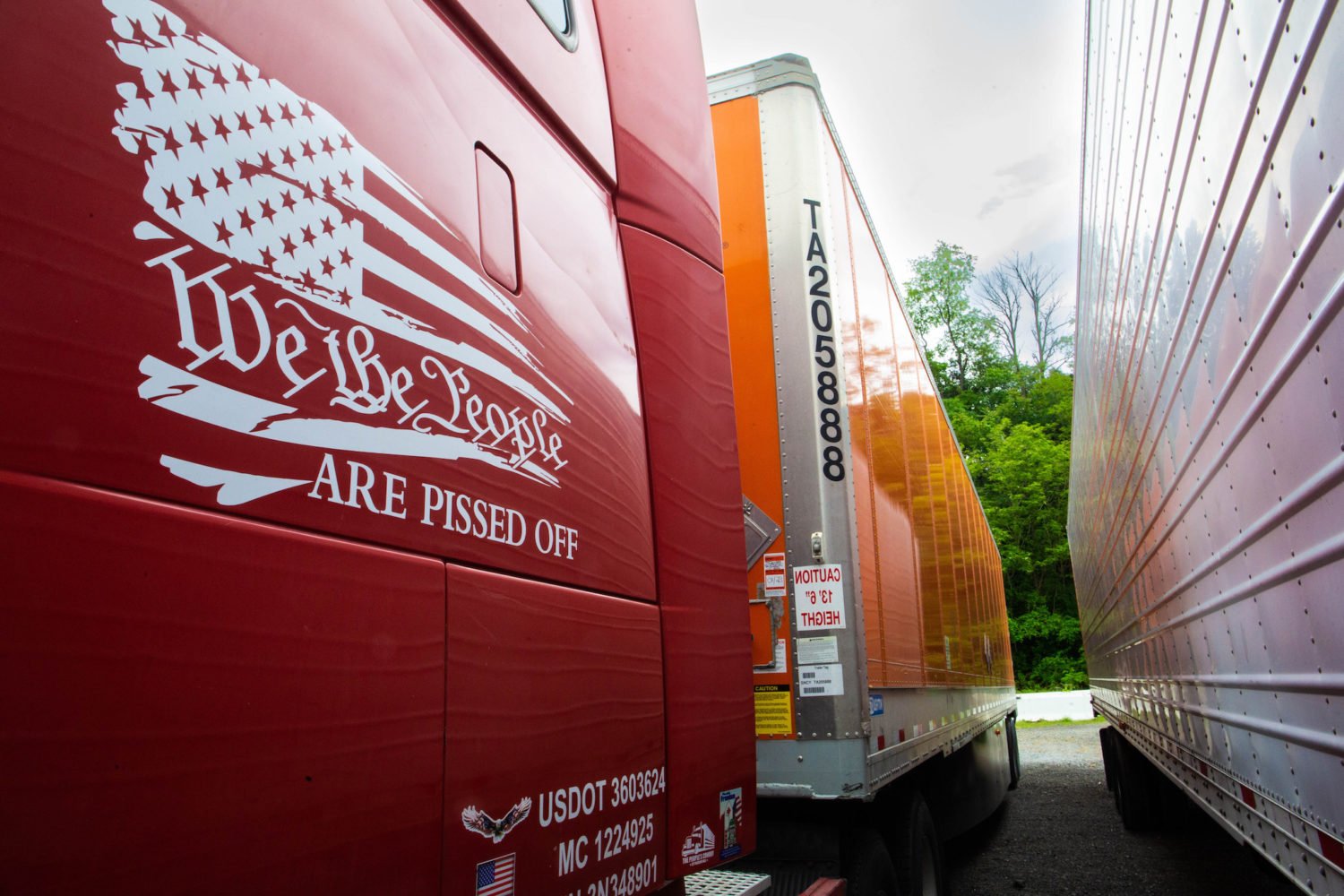On March 1, 2022, about 20 people showed up for a rally on the Washington Monument grounds meant to register support for a US version of the trucker convoy that paralyzed Ottawa the previous winter. The convoys were nominally a protest against the District of Columbia’s anti-Covid measures, but the mask mandate had ended by the time organizer Kyle Sefcik set up his rally, leaving the convoys a protest in search of a motivation. It didn’t help the convoy movement that Russia had invaded Ukraine several days earlier, diverting much of the world’s attention from participants’ purported grievances.
Sefcik, an MMA fighter who ran for governor in Maryland as an independent (and received 596 votes), had initially asked the National Park Service for a permit allowing one to three thousand attendees. He’d also organized a convoy that fizzled out after only five trucks turned up before a planned cross-country trip.
His troubles proved prophetic as others took up the challenge of being the trucker convoy that would bring Washington, DC, to its knees. A group calling itself the “People’s Convoy” began to arrive in Hagerstown on March 4, and a two-day rally was planned for the Dominion Raceway near Fredericksburg, but as Mother Jones reported last year, that, too, was a notable flop. This was, in retrospect, the highlight of the convoy movement, because at least some trucks showed up in Maryland.
Thus began a profoundly unsuccessful campaign to get DC’s attention. The original plan was to circle the Beltway as a show of strength, but that kind of bombed because as it turns out, the Beltway is often beset by traffic. Also, few Washingtonians could really figure out what the convoyers wanted or why they were trying to annoy commuters to achieve whatever that was.
Frustrated by the developing fiasco, organizers next attempted to roll up I-395, honking, saying they wanted to get a “glimpse of what the swamp looks like.” Turns out it looked like a place with no trucker convoys: Cops blocked exits, and back to Hagerstown the convoyers went to regroup.
They finally made it into DC in mid-March, where one cyclist managed to frustrate the convoyers, who began to view the entire region as lousy with their imaginary enemies, “Antifa.” Some reportedly got violent. By the end of the month, as participants—including its main organizer—peeled away and infighting grew among the convoy, the convoy announced it would leave despite not having accomplished anything.
But like bow ties and espresso martinis, the convoy stubbornly refused to recede into history. In May, a new crop of leaders announced their intention to return to DC. They instead went back to Hagerstown, where they established an arguably fascinating grievance-based microsociety. Washingtonian visited the group later that month and found a rather grim scene mostly populated by people who didn’t seem like they were necessarily missing work to protest, and a majority of vehicles that were not big rigs.
On May 20, the convoy announced it was time to declare “victory” and go home; the Hagerstown Speedway said it had asked them to leave. A hard core of stragglers formed a new movement that haunted the far outer reaches of the DC area with occasional forays into town. In July its leader, Dave “Santa” Riddell, got arrested on the Mall in response to a warrant from Maryland, where he was charged with blocking a roadway over the July 4 holiday. When he got sprung the next morning, about six people turned up to cheer him on. They tried sitting around on the Mall for a while, which was about as successful as previous efforts.

